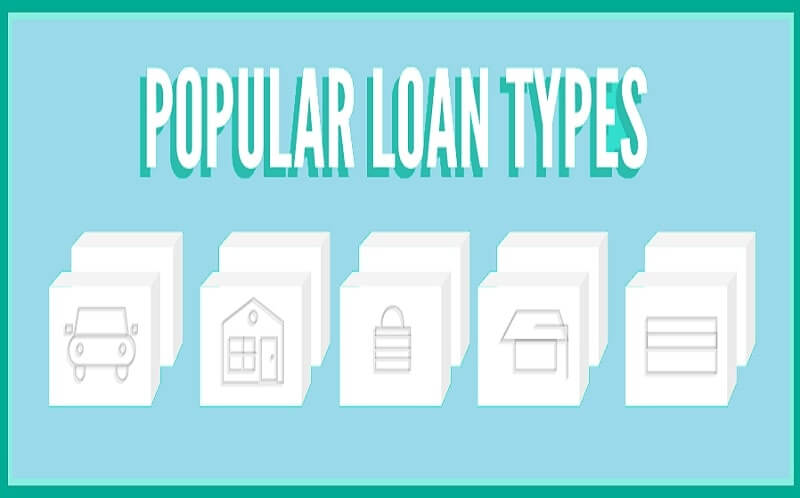Taking a loan is not something that one should be encouraged to do, but we can hardly deny that we all need loans. There are various reasons for taking loans. At times, the reasons are personal while other times business-related.
Understanding the differences, lenders created several categories. When you take a loan, it comes under one of these categories. In this article, I discuss loan types and how useful they are in meeting the needs of borrowers.
Personal loans
A borrower takes a personal loan for a purpose that’s personal, such as for taking his family on a trip to Hawaii or for giving a gift to his office colleague on his birthday. Personal loans are not secured, and the amount is not that high.
Most people ask their friends and family members for personal loans because lenders need them to submit identity details for verification, the details of their earning, and proof that they have assets, the worth of which equals the money that they are borrowing.
Apart from that, creditors can attach an interest rate, which is as high as 12%, and put a condition that the loan must be paid off within the next two years. When friends or acquaintances lend money, they don’t add such draconian clauses.
Small enterprise loans
Big businesses take loans to set up an overseas branch or to acquire another company. Small businesses borrow money for self-financing when initial bootstrapping proves unhandy. Lenders are local banks and the SBA (Small Business Administration). For wannabe entrepreneurs, requirements include submitting a business plan and putting personal assets as collateral.
Depending on the amount, the lenders give borrowers the option to repay the loan within the next five to twenty-five years. Unlike personal loans, small business loans are open for negotiation. If a borrower is not comfortable with the terms and conditions that bind the loan, then he can sit with lending agency and negotiate, so they make the terms more flexible.
Home-equity loans
To qualify for this loan, you need to have a home. In this type of loan, the money is lent against the equity, which is the market value of the home. Home-equity loans come with flexible interest rates. Lenders typically give borrowers 15-20 years’ time to repay the loan, so that they borrow a lump sum amount of money.
A home-equity line of credit keeps evolving, allowing the borrower to pay off some of the money he borrowed, and then borrow again; this affects the interest rate as it sometimes goes up and some other times down. From a consumer’s point of view, a home equity loan can be difficult to repay because the amount is high and not everything may go as per plan.
Student loans
The United States has some of the best schools in the world. Getting admission, however, is competitive. A student loan can be of two types: private student loan and federal student loan.
Most students prefer the former because the lending agency is the federal government, and it offers the loan with flexible terms and conditions such as lower and fixed interest rates, subsidized loan for undergraduate students, no credit check, tax-deductible interest, direct consolidation option, the absence of prepayment penalty fee, etc.
To qualify for a federal student loan, one needs to fill out the Free Application for Federal Student Aid (FAFSA) application form. As for private student loans, the borrower needs a co-signer, has a good credit record, and pay a variable interest rate, which can be as high as 15% or maybe even more.
Auto loan
Consumers take an auto loan to purchase a new vehicle. Since the vehicle you are buying is your property, an auto loan is an equity loan. The lender is either a bank or a car dealership agency. Customers often hesitate to take the loan from a bank because so many a bank might put a range of conditions. Car dealers are flexible on this matter. However, they offer a loan at a high-interest rate.
Make sure you can pay at least 20% of the total cost of the car as the down payment. Also, you will not be paying on the depreciation of the vehicle, and so, you need to keep it in good condition. People shopping for auto loan reports despite following all tips, they fail in selecting the best policy. I can recommend them some tips here, with the hope they haven’t tried these yet.
Conclusion
There are some other loan types, which I am not touching upon here. Maybe some other time. The ones I discussed are the most common types. Eight out of ten people shop for the loans discussed here. The odds are high you are or would be one of them. In that case, the article would be of help to you.
What do you think of the loan types discussed here? Would you like to take any of these loans? Let us know in the comment section.
Mac Mendiz is the blogger at Finance Blog. With her writings, she covers budget management, frugal living, money-saving tips, credit score improvement tips, and more. She is also a contributing writer at Finance Guest Post – a community for personal finance bloggers.







































